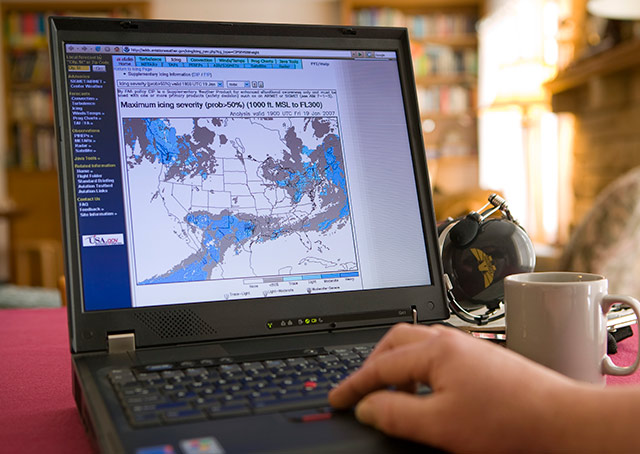What you see isn’t always what you get with aviation weather. That’s why you learned that a careful examination of weather reports, charts, and forecasts from various sources must precede any decision to fly.
Of course there are times when a glance outside at low ceilings and fog gives you the basic picture, and the latest METAR confirms it: "071619Z 35013G20KT 2SM BR OVC010 03/02 A2934 RMK AO2 SFC VIS 4 CIG 006V012."
The good news is that gradual improvement is forecast, signaling only a brief delay of your flight schedule: "FM071900 33015G25KT P6SM OVC022 FM080300 33010KT P6SM SCT035."
Then there are those times when the storms line up like airliners landing at a busy airport, or when a deep low pressure system stalls overhead for days at a time. Even then, you can still take advantage of down-time opportunities to further your learning.
Rather than call a timeout from your aviation education, keep getting weather briefings as if it were possible to fly during the delay. Not only will you see symbols, abbreviations, and remarks—such as some given in the excerpt above—that rarely appear during fair weather. Practice will make you a pro at correlating weather elements with the meteorological big picture. For example, as the low that was soaking northern New England was exiting, you could predict based on regular observation of regional frontal behavior that winds would swing to the northwest as the overcast cleared (see the latter portion of the TAF given above).
Tracking weather is a fun way to stay connected to your aviation project during down time, giving you a head start on your next round of trip planning (which should begin well in advance of your scheduled flight date.)
From the point of view of preparation for your checkride, developing the habit of tracking the weather as a matter of routine will help you nail the practical test standard of exhibiting "satisfactory knowledge of the elements related to weather information by analyzing weather reports, charts, and forecasts from various sources." And it will sharpen your ability to interpret all that weather information to assess risk—a skill the examiner is also required to probe.
How will that skill be probed? By developing a scenario that calls on you to use your know-how to make aeronautical decisions that assure the flight’s successful outcome "is never in doubt."




